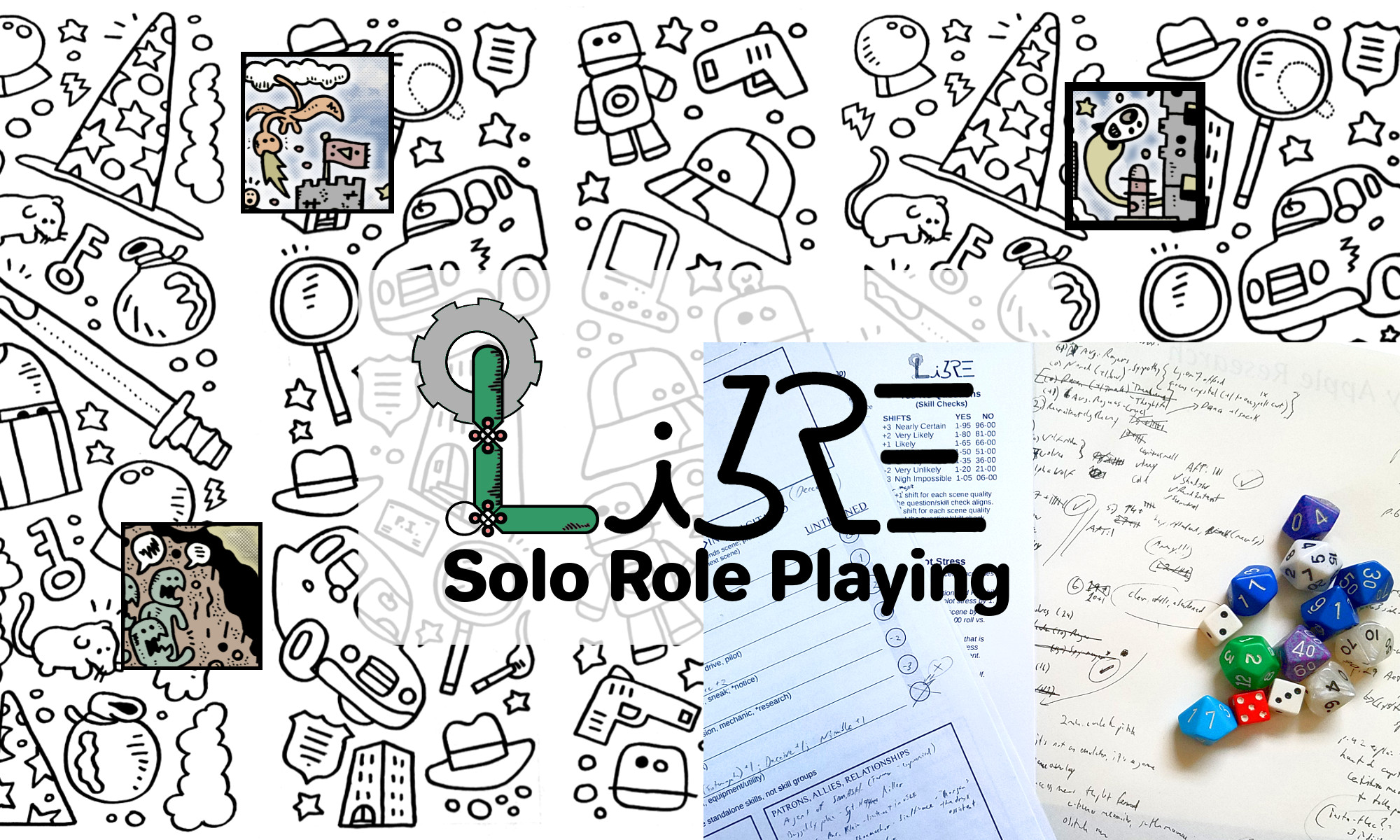It might seem like Libre Solo Role Playing is really complicated. There are 50 pages of GM Engine rules; another 35 pages of RPG ruleset plus optional rules; and another 30 pages of appendices and other summary tables to wade through. It can definitely look overwhelming.
The core game is straightforward and simple; you can strip it down into a number of inter-related parts.
- You get a goal (called a mission) for your player’s character, and try to resolve that mission through a series of scenes that collectively tell a story. You get closer to your goal by achieving “meaningful success” in scenes. Get enough meaningful successes, and you ‘win’ a positive outcome to the story. That might mean wealth, experience or prestige. If you can’t get those successes, quit the story and face a bad ending.
- Build each scene by imagining where you want the scene to be and what you want it to look like. Then roll three random scene qualities. Adjust your expectations to those scene quality rolls as much as you can. You can roll randomly or choose a key person of interest and/or a key item to be present on the scene. These people, objects and descriptors are “hints” about what’s important in the scene that you can use. Write in the details of what you want the scene to look like as window dressing. This can help you later.
- If you’re playing a cutscene, the scene will be about a dialog with another person. Cutscenes don’t get you closer to your goal, but they get or change your mission goal(s), and let you request resources and assistance.
- If you’re playing an obstacle scene, for meaningful success you need two things: Come up with three different, moderately difficult skill checks where your player’s character succeeds (with or without help); and “ask for trouble” at least three times. Succeed at those two things and the plot moves forward.
- But — every skill check failure has a consequence. When you fail a check, something goes wrong. Every time you ask for trouble, it risks trouble happening. That can also mean a threat or setback.
- If you’re playing an encounter scene, you build a randomly generated foe group and then try to beat it in a conflict. Sounds simple, but it means resorting to skill checks more than ever to gain advantages, because those who live by the sword… Win the conflict and the plot moves forward.
- The player can throw in the towel when scenes just aren’t moving forward, but that can mean dealing with the repercussions in an immediate follow-up scene.
- Use the yes-no question tool to add or clarify details that are uncertain in a scene, and to ask for trouble. Use skill checks to see whether an attempted action succeeds or fails.
- There’s plot stress, in the form of a counter that increments every time there’s a yes-no question or skill check. Every so often, a roll will spit out an unexpected event that the player may need to deal with.
That’s the game in a nutshell! Much of the rules are about adding structures, with examples and guidelines to the basic game’s framework. What should a dialog look like, and what can a player request? There are structured questions that tell you. How does one uncover secret or hidden things if the player is also the GM? There’s a technique for exposing the unknown. What about handling adventuring parties? There’s a section about patrons, allies and rivals, as well as advice about foe groups. You can flip encounter scenes into obstacle scenes and vice versa.
Large-scale battles? Mixing melee and ranged combat? Dealing with special powers? Advancing the player’s character, ally and rival experience? The RPG ruleset has all that covered, but bring in your own RPG ruleset if you’d like.
